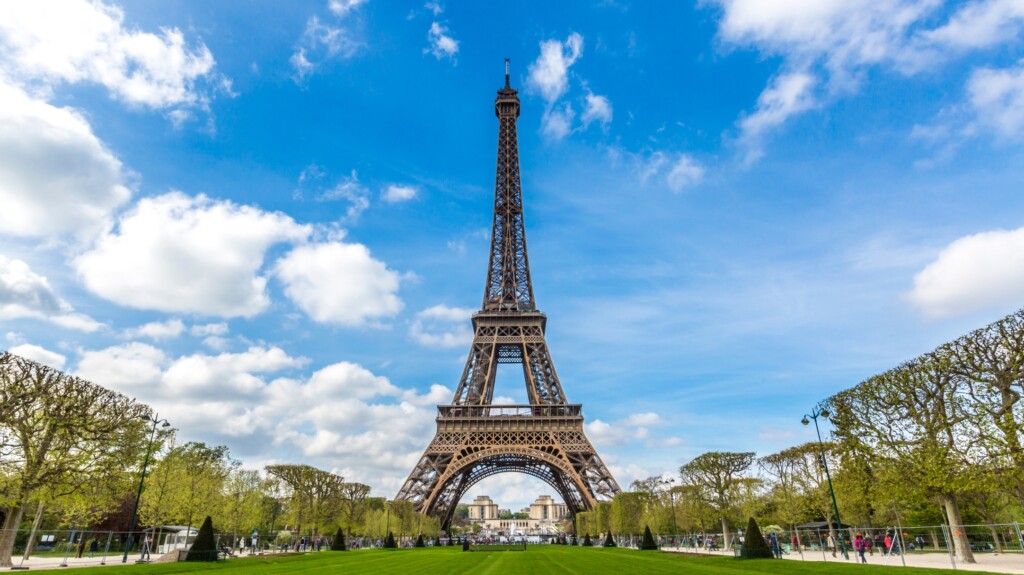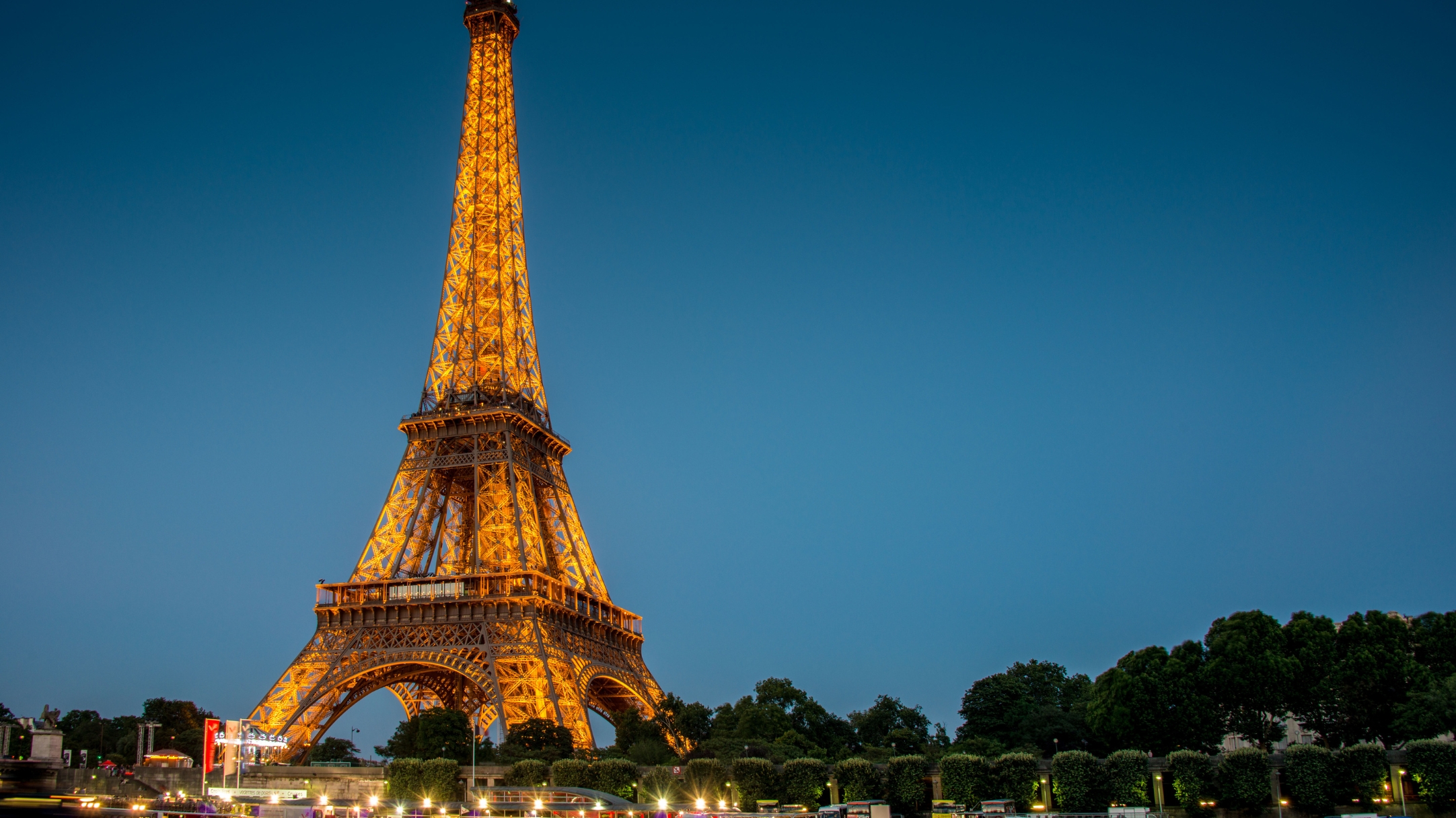The Eiffel Tower is the preeminent symbol of Paris, soaring over the city with its unique lattice structure that loops upwards into the sky. Once the loftiest building worldwide, the Eiffel Tower formed a symbol of modernity and ingenuity during the twentieth century. From then, it is the unrivalled historical representation of Paris, drawing millions of visitors annually. It can also be viewed from most of Paris, making it a major emblem for the population who reside there. We glance through a few of the most unusual and fascinating facts concerning the Eiffel Tower to commemorate this architectural engineering marvel.

1. Gustave Eiffel Designed The Eiffel Tower
The Eiffel Tower was designed by the renowned engineer Gustave Eiffel, who operated a bustling workshop in Levallois Perret, close to Paris. His engineering firm had expertise in metal frameworks, much of which contained the same noticeable lattice metalwork viewed in the Eiffel Tower. Eiffel won an open contest to plan the Eiffel Tower, which was to become the crowning glory at the Paris World Fair in 1889.
2. It Needed 22 Months To Finish
The building of the Eiffel Tower took nearly 22 months to finish, an astounding feat during the time, when workers possessed far fewer of the tools and machines we depend on today. Astonishingly, though the workers had to climb extremely high, no one was hurt or killed during the construction of the tower.
3. The Eiffel Tower Is Built Of Iron
Gustave Eiffel had fame for creating iron monuments which could endure all weather conditions, with the Eiffel Tower being no exception. He used a specific kind of iron for the tower named ‘Puddle Iron’, sourced from the Pompey Forges to the East of France. The nomenclature of this iron arises from the refining or ‘puddling’ procedure the metal undergoes, which removes excess carbon after liquefying the ore. Gustave debated this kind of iron was the most robust and strongest construction material in the world.
4. The Eiffel Tower Contains 3 Floors
The Eiffel Tower includes 3 floors in full, which are all open for visitors. The first 2 floors are reachable by stairs and an elevator, whereas the highest level, or summit, must be scaled by steps. The first 2 floors contain cafes and restaurants, while on every level there is a lookout deck for watching the city of Paris from a high.
5. It’s As Weighty As A Whole Freight Train
Placidly, the weight of the Eiffel Tower is strikingly high, having almost identical weight as a complete freight train. In all, estimates indicate it is nearly 10,100 tons. The metal framework solely weighs almost 7,300 tons, with the thick shield of protective paint on its face being 60 tons!
6. The Eiffel Tower Needs To Be Repainted Every Seven Years
Under Gustave Eiffel’s stringent direction, the Eiffel Tower has to be repainted every seven years with a heavy layer of protective paint, to secure the iron from the weather’s corrosive effects. The government of Paris have adhered to these directions during the past century, due to which it still looks in such immaculate condition currently. During the immaculate condition currently. During the years, the tower has been painted in several colors, from the initial reddish-brown hue to bright yellow. A specially combined paint shade termed “Eiffel Tower Brown” was picked by the French in 1968, which is presently in use.
7. Artists Staged A Dissent About The Eiffel Tower
The tower was not generally approved by Parisians in its time – in reality, a crowd of 300 academics and artists staged a bitter protest demanding its instant removal.
8. It Has Restricted Visitor Accommodation
The Eiffel Tower may be a colossal monument, but it still holds a limited visitor accommodation of 5,000, to be divided over separate levels simultaneously, due to the tower’s pointed shape. The first and biggest level can hold the burden of 3,000 people, the second level is slimmer, and can carry almost 1,600, whereas the much tinier top level can accommodate just 400 people.
9. It Was Formerly The Loftiest Building In The World
The Eiffel Tower formed part of the ‘race to the sky’ in the recent 19th century, and it struck the record for the tallest building in the world in 1889, being 986 feet. Nevertheless, it just remained in the top position for 4 decades, following which period both the Chrysler Building, and the Empire State Building set latest records.
10. Tinier Replica Eiffel Towers Occur Worldwide
The tower is so renowned currently that a succession of tiny replica towers of similar design have been built in cities across the world. These comprise Las Vegas, Brazil, Tokyo, Sydney, and Riga.
11. The Eiffel Tower Is Adopting Gold Before The 2024 Olympics
The Eiffel Tower will be renovated with a golden paint shade in 2024, to match with the 2024 Paris Olympics. The job of repainting will be among the tower’s most thorough revamps in 130 years.
12. The Eiffel Tower Alters In Size
The tower’s metal shrinks in the winter and enlarges during the summer permitting the tower to alter its size over the year. The height of the Eiffel Tower can modify by nearly 15 cm. This occurs because puddled iron, of which the tower is composed of, is sensitive to the differences in temperature. Therefore, when temperatures increase, the tower grows in size, due to thermal expansion and in winter it contracts.
13. There’s An Undisclosed Apartment At The Top
Atop the tower, Architect Gustave Eiffel constructed a private apartment where he could carry out experiments and treat esteemed visitors. Among the most eminent of his guests was Thomas Edison. The office presenting one of the finest vantage spots from the tower, but is shut off to visitors for several years. Nevertheless, you can see lifelike wax statues of Eiffel, his daughter Claire and Thomas Edison discussing in the room.
14. The Tower Can Drift
The tower was designed to withstand gusty winds. Nonetheless, it does move in a storm, and if the weather condition deteriorates you can see it shift. It’s not just the weather phenomenon that moves the tower. Besides expanding it, the sun also makes the tower to slant away from it. As the sun strikes just one out of the 4 slides, the Eiffel Tower inclines to lean. On a bright day, the tower top can shift in a circle fifteen centimeters in diameter.
15. The Tower Wasn’t Built To Stand Permanently
The Eiffel Tower was constructed as a temporary spectacle for the World Fair 1889 in Paris, which marked the 100th anniversary of the French Revolution. In an effort to stretch the Tower’s life, Gustave Eiffel raised a wireless telegraph transmitter and radio antenna in the Tower. The Eiffel Tower is up to now utilized to broadcast television and radio programs across the world currently.
16. The Eiffel Tower Wasn’t Designed By Gustave Eiffel
Although the Eiffel Tower was termed after Gustave Eiffel, he is not solely responsible for building the structure. The Tower was really built by 2 senior engineers who tasked for his company – Emile Nouguier and Maurice Koechlin. The 2 engineers collaborated with French architect, Stephen Sauvestre to make the monument more charming. Nevertheless, Mr. Eiffel contributed most of the funds to construct the tower and afterwards bought the patent rights.
17. The Tower Functioned During World War 1
Many inventions occurred at the Eiffel Tower in the initial 20th century. In 1914, at the onset of World War I, the advancement of German troops’ into Paris was disrupted by a radio transmitter situated in the tower that jammed radio communications of the Germans. This is said to have a major role in the Allied triumph at the First Battle of the Marne. The French troops caught enemy signals from Berlin using the wireless station of the tower.
18. Hitler Ordered The Tower To Be Destroyed
In 1944, when the Allies were prepared to free Paris, in a desperate attempt, Hitler commanded the destruction of the whole city, together with the tower. Hitler dispatched a message to Field Marshal Walther Model and von Choltitz ordering that Paris be defended by all means, and that if it could not be defended it should be converted into a field of destruction. The devastation of Paris would be the devastation of France, he contended. Fortunately, Choltitz was aghast at the order and never implemented it.
19. The Tower Is Really Married
No, don’t be startled! Erika Aya (or Erika Eiffel), an American contesting archer, “wedded” the Tower in 2007. She met the tower initially in 2004 and asserts that she experienced an immediate attraction. Medical professionals have categorized this attraction as a type of paraphilia, a disorder whereby people develop strong bonding to inanimate things. She also operates the support portal Object Sexuality Internationale, an organization for persons who build substantial associations with inanimate objects.
20. It’s Painted In Several Colors
Built using puddle iron, the tower has been delivered multiple coats of paint to secure it from oxidation. To assure its survival, the tower is repainted every 7 years. Even now, the painting is performed by hand, after cleaning, stripping, and rust-proofing the entire 300 meters. The tower is repainted every 7 years. Even now, the painting is performed by hand, after cleaning, stripping, and rust-proofing the entire 300 meters. During the years, the Tower has put on different hues, from Venetian red to hues of yellow-orange. In 1968, the tower put on the hue that has become recognized as Eiffel Tower Brown. The tower color is composed of 3 brown hues, the lightest at the bottom and the darkest at the top. The shade is intended to conceal air haze and provide the structure an even look from top to bottom.
21. The Tower Earlier Hosted A Post Office
The Eiffel Tower contained various installations since its advent, like Gustave Eiffel’s penthouse apartment, a radio station, the Le Figaro newsroom, and also a theatre! Among the most exciting installations is the post office on the tower’s first floor. Placed 187 meters over the ground, it was regarded the tiniest Parisian post office, and it enabled people to post mail with the grand illustrated Eiffel Tower postmark and collector’s stamps. Mailboxes were present on every floor for the visitors to dispatch postcards, stamped with postmarks that could vouch for their passage through every level of the Tower.
Bottom Line
The Eiffel Tower is amongst the most picturesque and magical spots to visit in Paris. Many people view the landmark during the evening and at night as the Golden Lighting lights up the structures, offering people with miraculous and mesmerizing experiences.
Before you become all keyed up to post on your newsfeed, keep in mind: the light display is primarily an artwork secured by copyright. Shooting and exchanging photos of the Eiffel Tower is excellent for individual use, though not for commercial purposes. Avoid picking up trouble with the French authorities.

